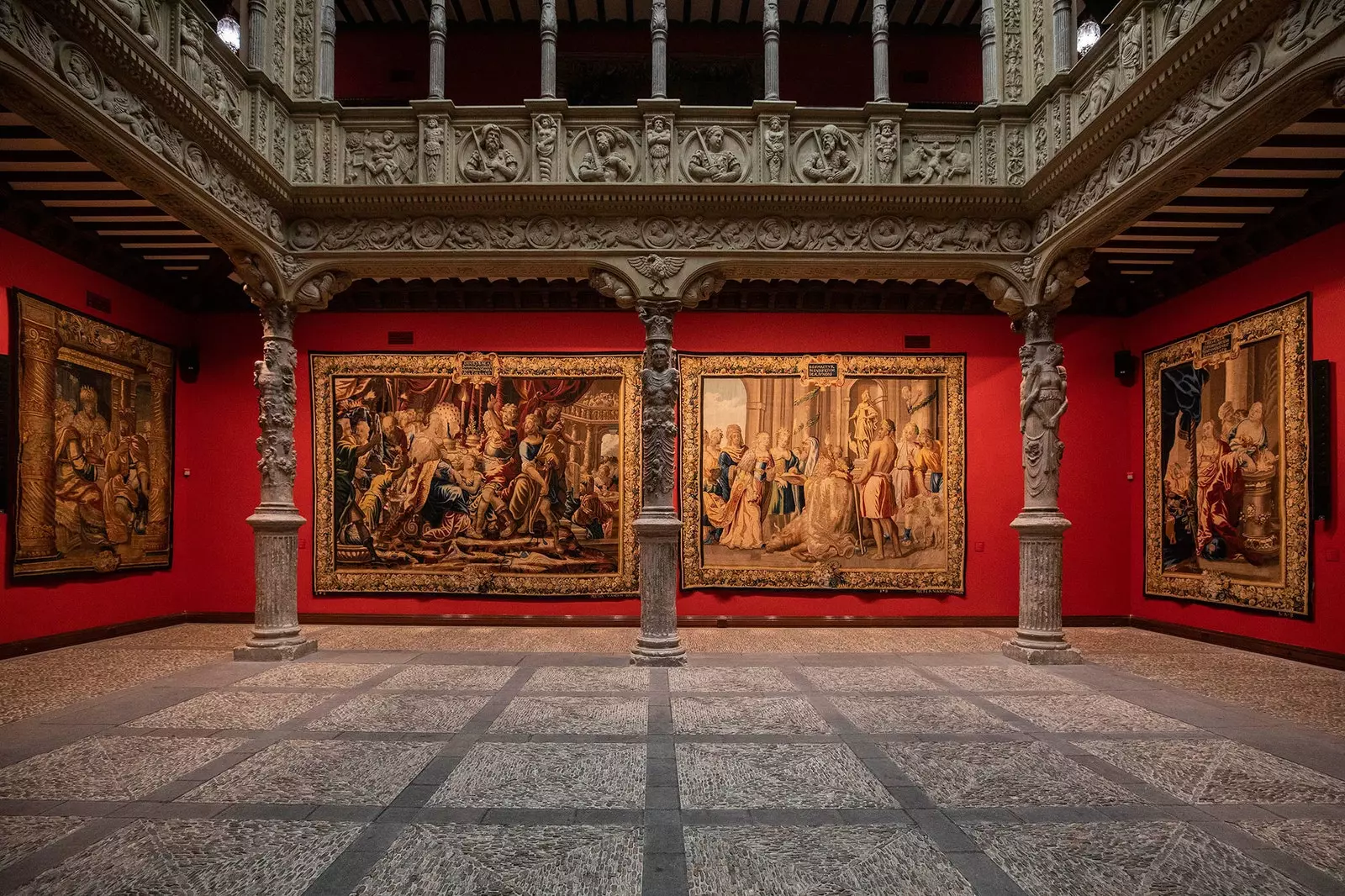
The Patio de la Infanta, a little-known Zaragoza jewel.
Before the War of Independence, The Aragonese capital was known as the Spanish Florence due to the number of Renaissance palaces it possessed. After two French sieges in which the people of Zaragoza defended their city street by street and house by house, very few of those palaces remained standing. However, there were some irreducible hands that did survive despite the vicissitudes.
The Courtyard of the Infanta is one of those jewels that could have been lost several times throughout history, but that miraculously managed to survive over the centuries, thanks to that Aragonese quality that is perseverance (not to be confused with stubbornness, as gossips say). As Pérez Galdós narrated in his National Episodes: “Among the rubble and among the dead there will always be a living language to say that Zaragoza is not giving up”.
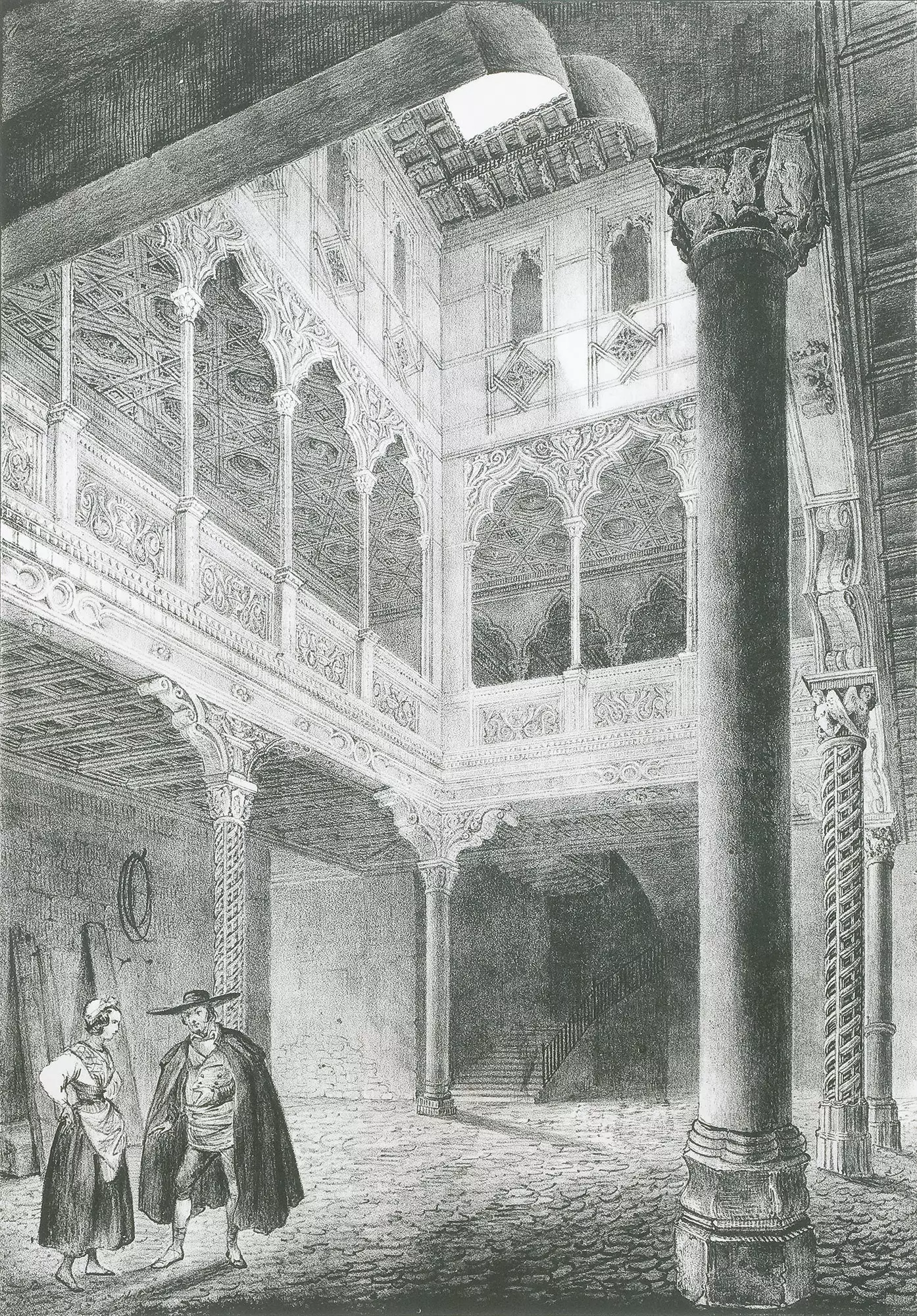
19th century engraving of what was the house of Gabriel Zaporta.
Gabriel Zaporta was a converted Jewish banker, originally from the Monzón area, who settled in Zaragoza around 1535 with his first wife, Jerónima Arbizu, with whom he had two children: Isabel and Luis. He was the first banker of the Crown of Aragon and he maintained prosperous commercial relations with Valencia, France, Flanders and Italy, where he exported products such as wool, wheat, saffron and cattle. He also granted loans and credits and among his most illustrious clients was King Carlos I himself, who granted him the title of nobleman of Aragon in 1542 together with the lordship of Valmañá.
After the death of his first wife, Gabriel Zaporta had a palace built on Calle Nueva in Zaragoza, on the edge of the old Jewish quarter, as a wedding present for his second wife, Sabina de Santangel, with whom he was deeply in love. The house occupied about 1,700 square meters and was organized around a square central open-air courtyard, heritage of the Roman tradition, with ornaments reminiscent the Italian fashion of the time and were a demonstration of power and wealth.
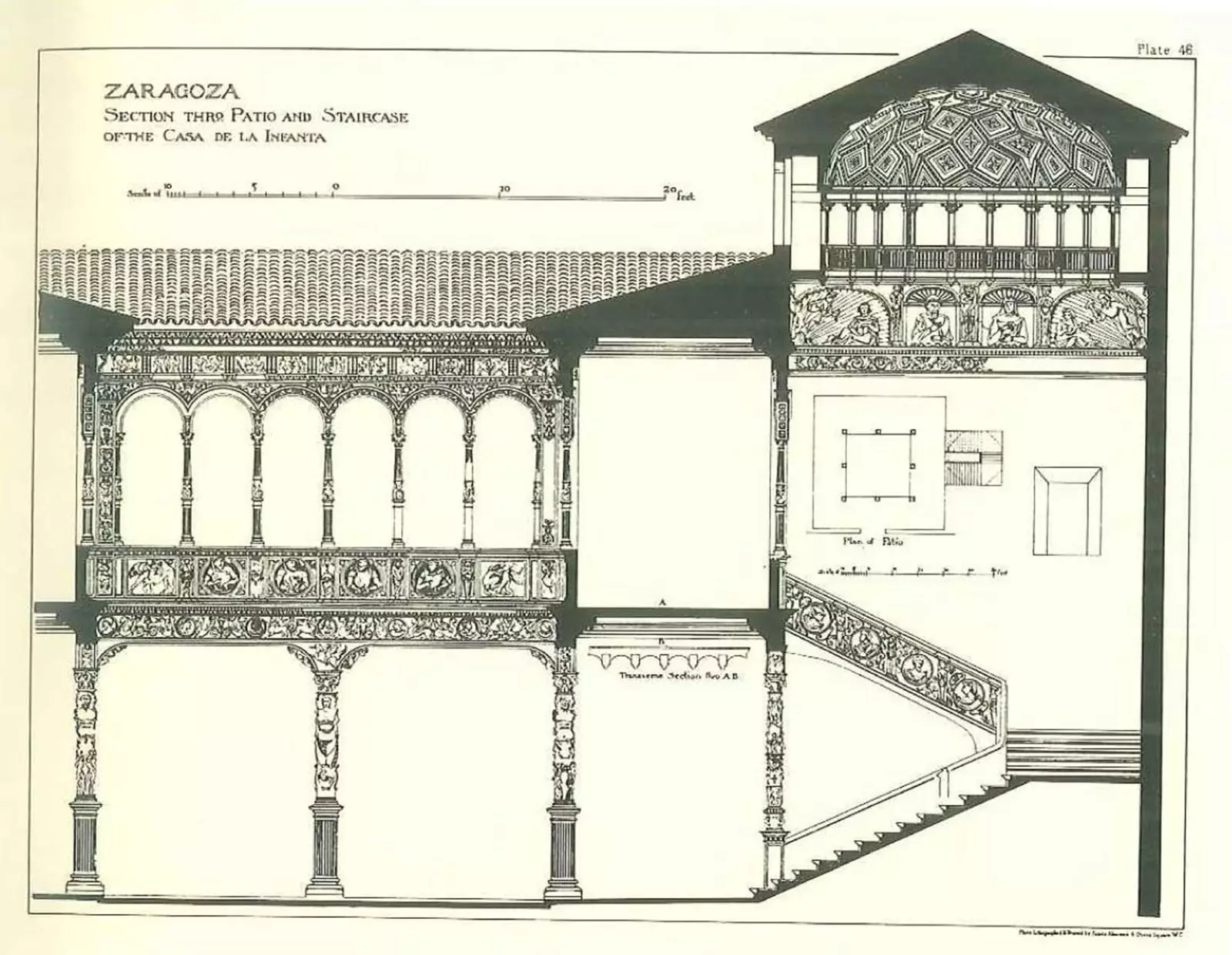
Plan of Casa Zaporta, Zaragoza's 'Palace of Love'.
The patio consisted and consists of four sides and the parapet that borders them is decorated with sixteen medallions in which you can see busts of historical figures such as Carlos I, Fernando el Católico, Felipe el Hermoso, Charlemagne or Roman emperors such as Trajan, Hadrian or Marco Aurelio. Beneath the parapet, on the columns, runs a small frieze with 28 medallions facing each other and representing fourteen pairs of famous lovers, including Paris and Helen, Eros and Psyche, Dante Alighieri and Beatrice, the Jews Abraham and Sarah and Jacob and Rachel, or the Greco-Latin Seneca and Pompea and Ulysses and Penelope. It is not surprising then that Casa Zaporta was known at the time as the Palace of Love.
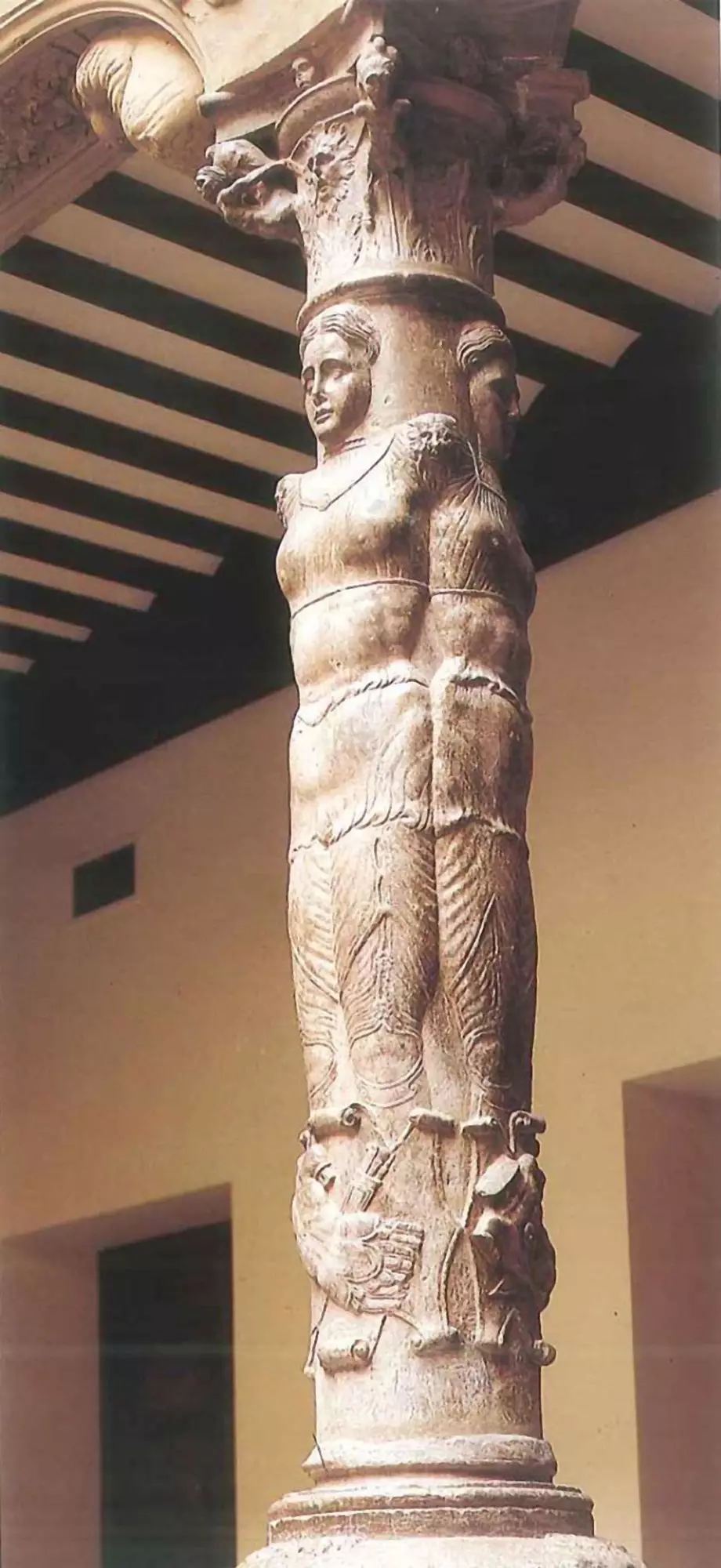
Detail of one of the columns of the Moon in the Patio de la Infanta.
A PATIO, A WEDDING AND A BIRTH CHART
However, all this warp of historical sculptures and mythological decorations were nothing but a way to camouflage something much more cabalistic and occult that researchers took several centuries to decipher. Under the effigies of kings and emperors and the frieze with the faces of universal lovers were the symbols of the four classical elements: water, air, earth and fire, which in turn rested on four central columns, which contained the representation of four planets: the Sun, the Moon, Saturn and Mercury arranged according to the order of the cosmos at a very specific moment.
As Jewish converts, Gabriel and Sabina had to demonstrate their Christian faith before the world and therefore they could not recognize something that would have been a heresy for the time: the courtyard was designed to represent and commemorate the birth chart of the exact moment of their wedding: 6:50 p.m. on June 3, 1549.
The bride and groom, Gabriel and Sabina, carved in wood, preside over the patio from above and watch, semi-hidden and accomplices, the secret horoscope of their marriage with somard irony.
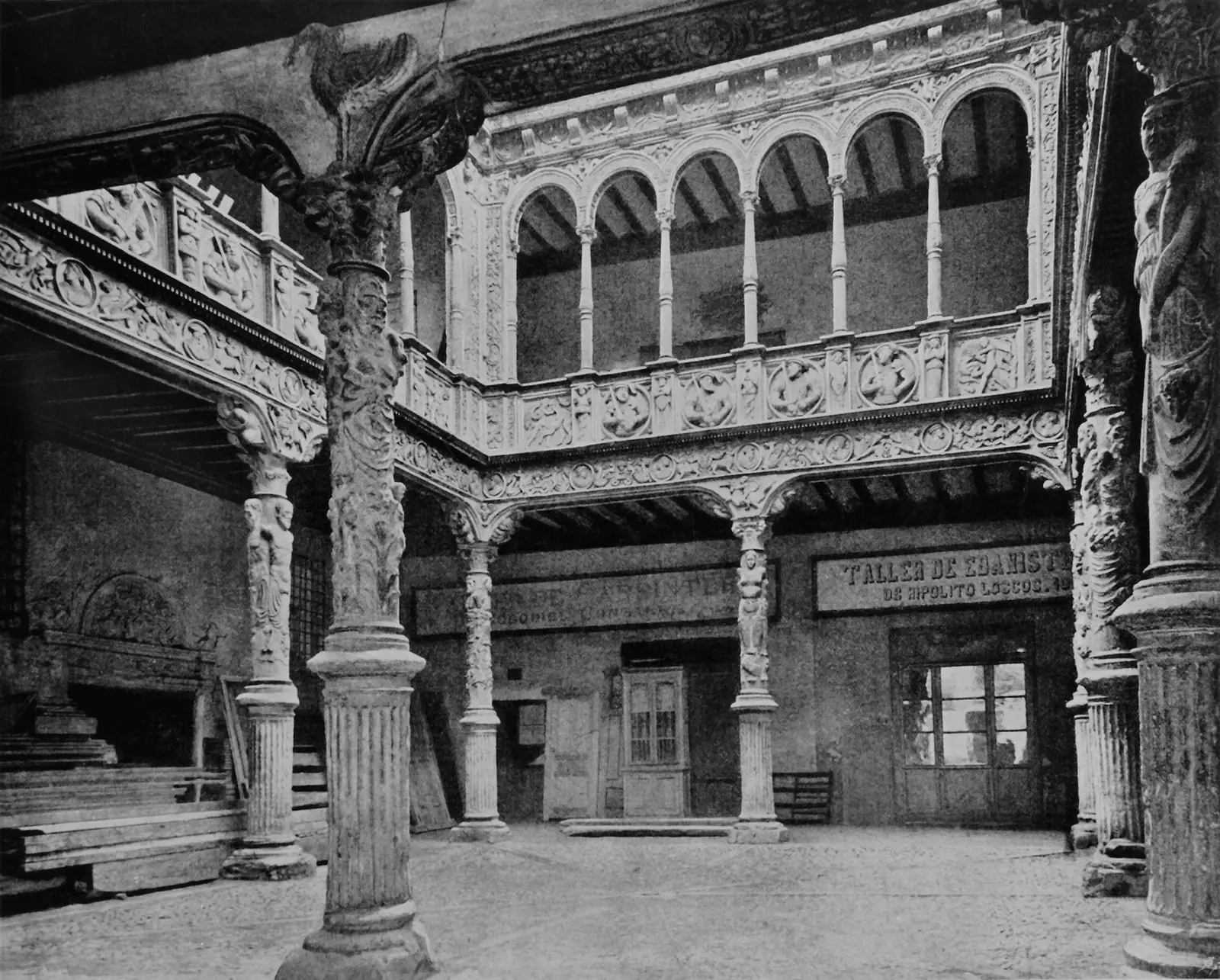
From 1860 different uses were given to this Zaragoza Palace.
A TRUNCATED DYNASTY
The couple had three children: Gabriel, who died at the age of 19; Guillén, who became a Franciscan and renounced his inheritance and surnames; and Leonor, who had a child, Martín, who did not live more than two years. Sabina died on March 20, 1579 and ten months later, her husband Gabriel followed her on February 4, 1580. The family home was inherited by Luis, her son from her first marriage, but he died a year later, so the property passed into the hands of her daughter, Jerónima Zaporta y Albión, She was then six years old.
The widow, Mariana of Albion and Reus, she contracted new marriages with the poet Lupercio Leonardo de Argensola, Major chronicler of the Kingdom of Aragon, with whom she had another son, Gabriel Leonardo y Albion, who was the one who finally inherited the House when his stepsister Jerónima passed away without descendants.
From the 17th century, Casa Zaporta passed into the hands of another family line, the Franco and López, who already entered the 18th century rented it to the merchant Martín de Goicoechea, patron and friend of the painter Francisco de Goya. In the middle of the Enlightenment, the young Royal Economic Society of Aragon decided to found the School of Drawing in 1784 and install it on the ground floor of Casa Zaporta. A few years later, in April 1792, King Carlos IV converted this School into the Royal Academy of Fine Arts of San Luis, which was later installed in what is now the Zaragoza Museum.
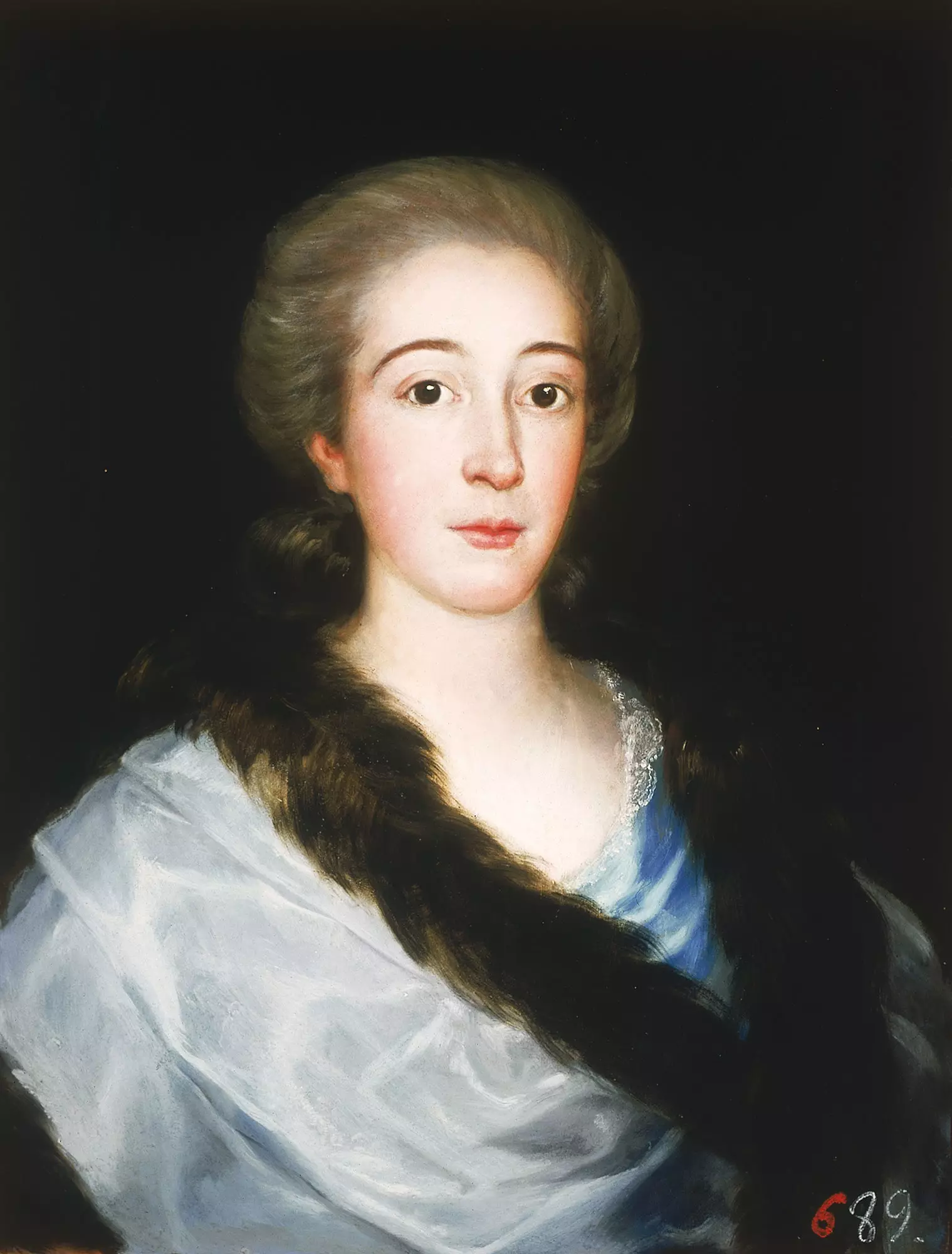
Portrait of María Teresa de Vallabriga, painted by Goya.
After having Ramón de Pignatelli as an illustrious tenant for a few years, Casa Zaporta once again became an orphan until in 1793, María Teresa de Vallabriga, widow of the Infante don Luis de Borbón, brother of Carlos III, decided to return to her hometown after years at court and live there. The House became a center for intellectuals, artists and enlightened people and from that moment on, the palace was renamed Casa de la Infanta and its patio, 'Patio de la Infanta', a name with which it has come down to our days.
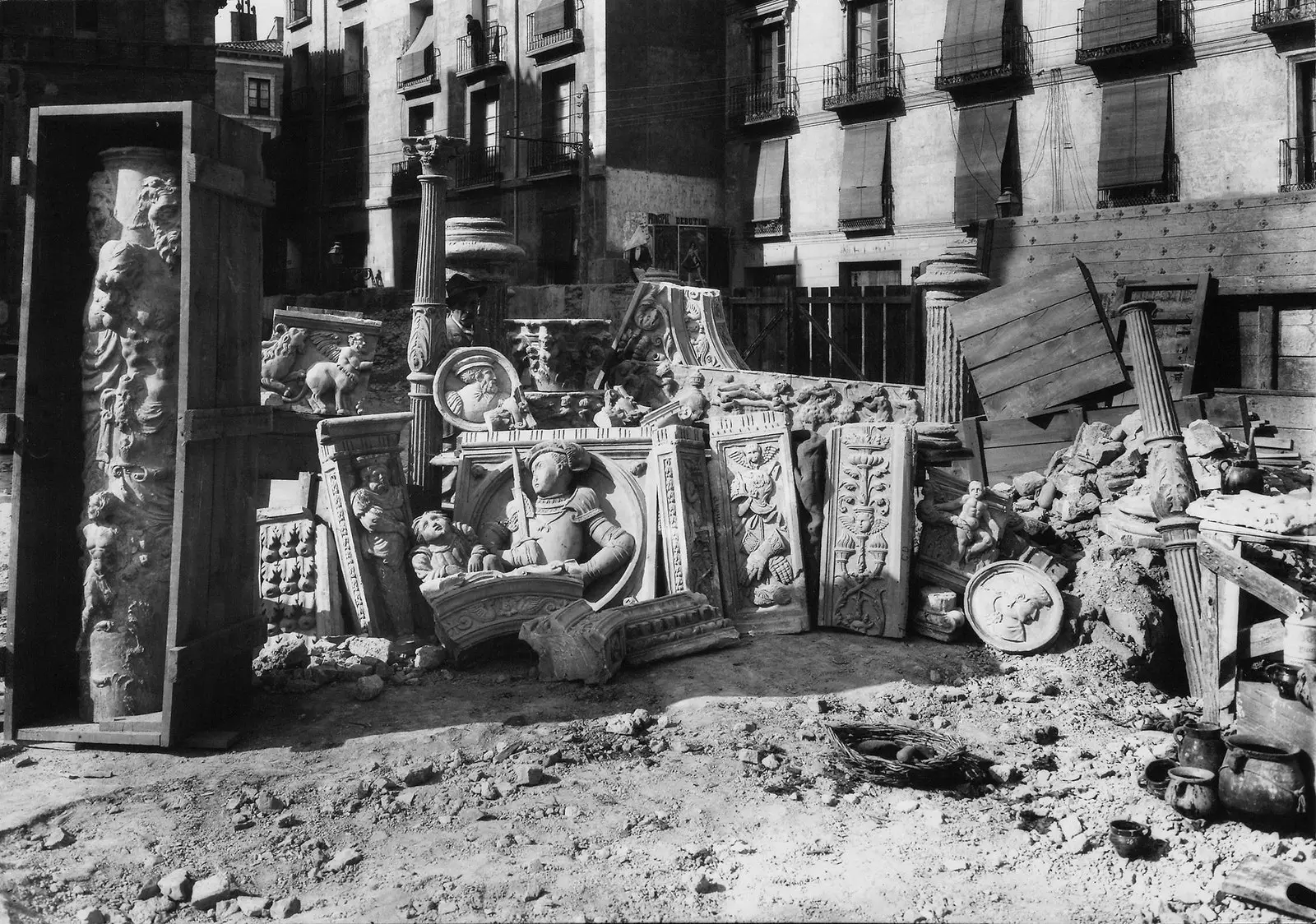
The Patio de la Infanta, disassembled, awaiting its transfer to Paris at the beginning of the 20th century.
DETERIORATION, FIRE AND TRIP TO FRANCE
At the death of the Infanta, the owner family allocated the building to other types of uses. It housed students, artists, merchants and artisans; it served as a literary Lyceum, it housed the Monarchic and Liberal Casino, later the Aragonese Practical Legal Academy and it was also a warehouse and carriage workshop. In the mid-19th century, the owners installed gas lighting and rented out the spare parts of the building. The patio and the house then served as a foundry, coal and wood warehouse, music school, printing press and even a cabinet-making workshop.
On the night of September 11, 1894, the house suffered a terrible fire from which only the patio and the stairs were saved. The heirs, after the accident, decided to tear down and sell the walls of the palace. Curiously enough, the demolition began on February 4, 1903, the anniversary of Gabriel Zaporta's death. Despite the efforts of some intellectuals of the time, the patio was sold to the French antique dealer Ferdinand Schultz for 17,000 pesetas, who dismantled it, moved it and reassembled it. as a showcase for his antique shop at 25 Rue Voltaire in Paris.
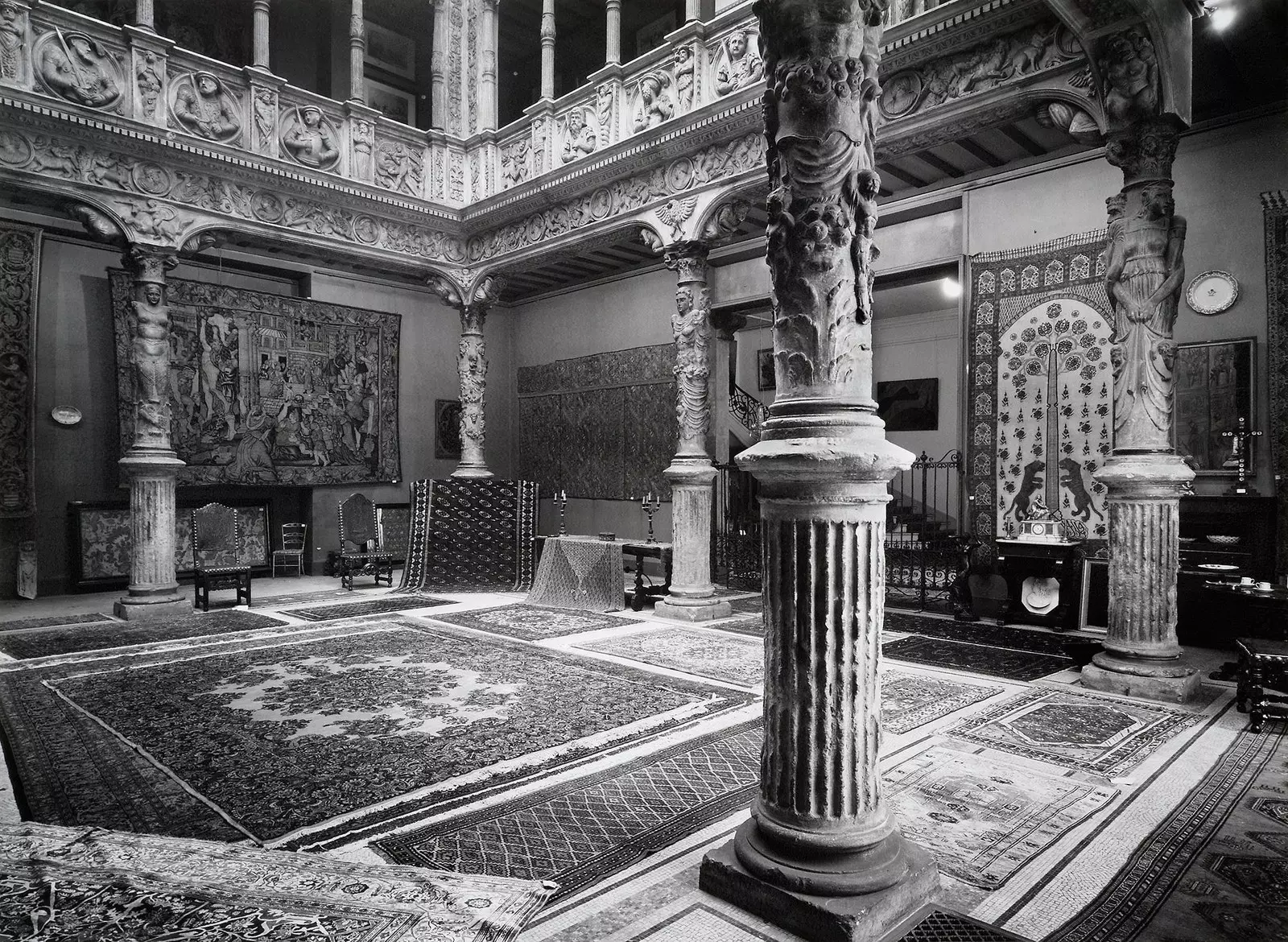
The Patio was used to decorate an antique shop in Paris.
BACK HOME
In 1958, the news hit the press and José Sinúes, then director of the Caja de Ahorros de Zaragoza, Aragón y Rioja (today Ibercaja) decided to acquire it again with the intention of restoring the memory of Gabriel Zaporta and the splendor of that Renaissance Zaragoza. He paid 30 million French francs for it. For more than twenty years the Patio was kept until, in 1980, they decided to install it in the new headquarters of Ibercaja in Plaza Paraíso, where we can still visit it today and admire some of the secrets it still hides.
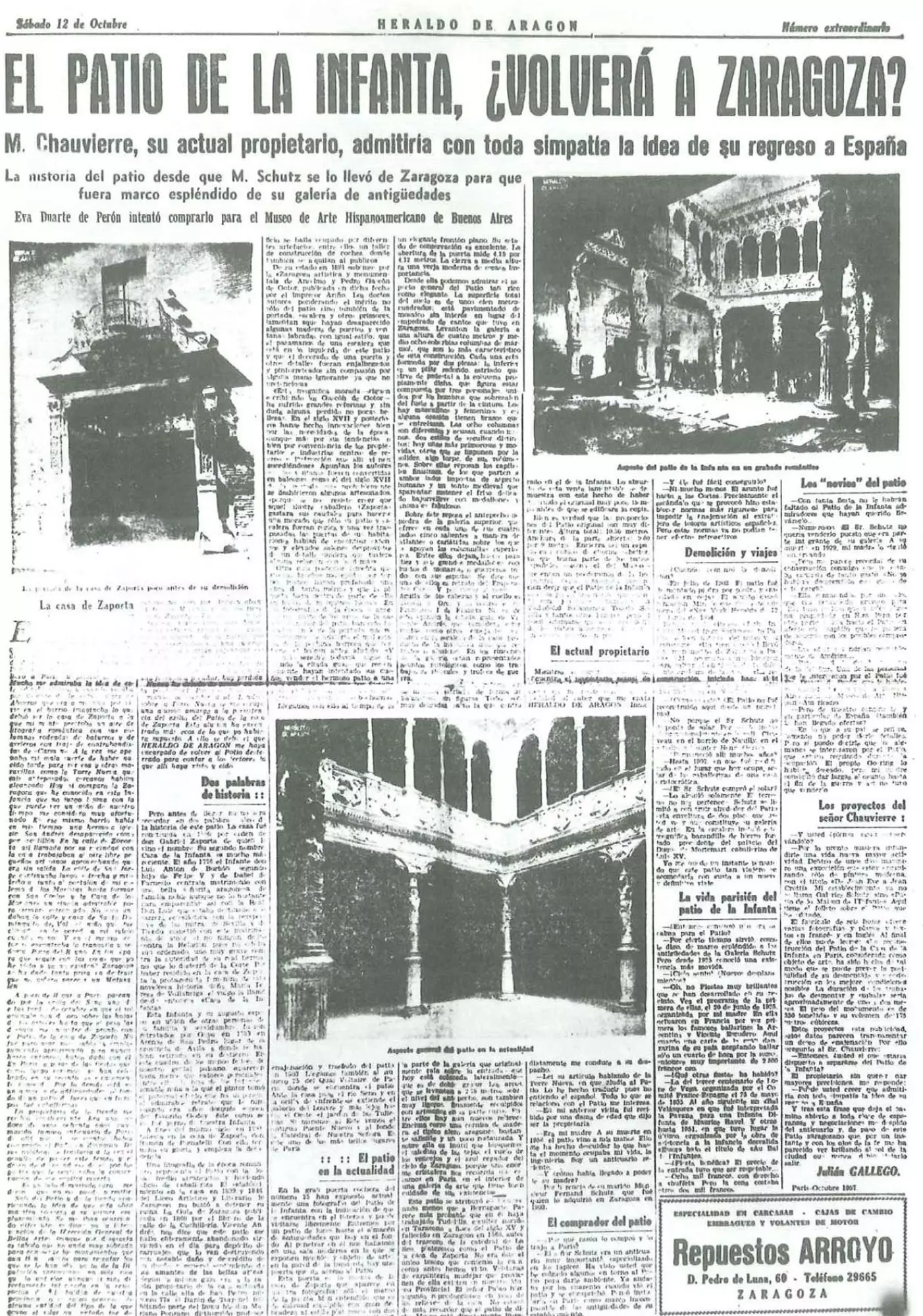
The Heraldo de Aragón echoed in 1903 the history of the Patio de la Infanta.
